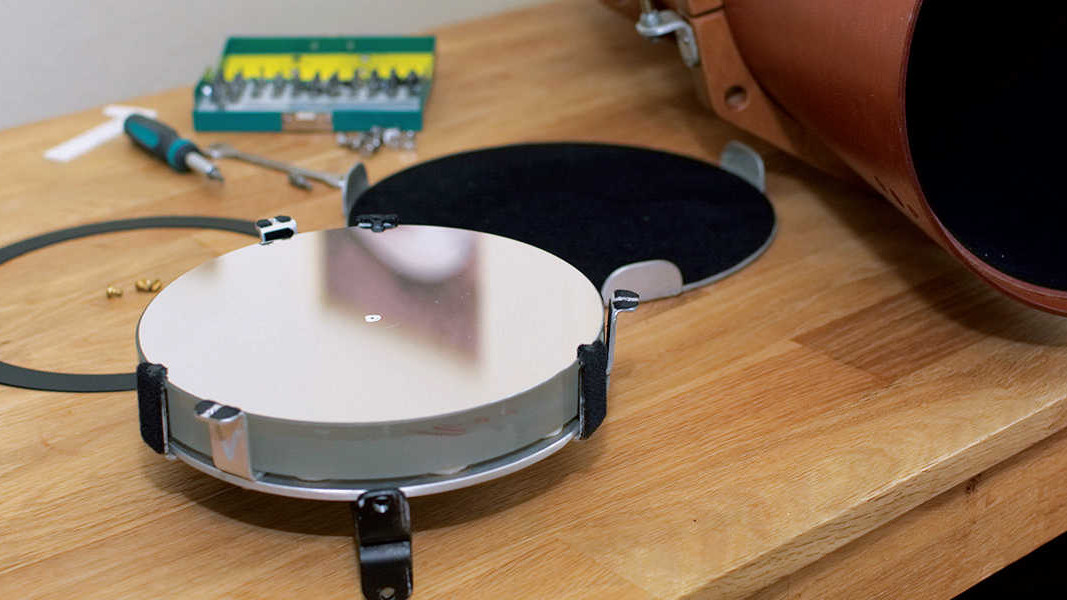When changing a mirror may be worthwhile
A Newtonian’s primary mirror is easy to replace. But when is the procedure worthwhile?
 Since the Newtonian's primary mirror is the only component involved in producing the image, it is easy to replace. S. Wienstein
Since the Newtonian's primary mirror is the only component involved in producing the image, it is easy to replace. S. WiensteinThe primary mirror is the only optically active element in a Newtonian telescope – so it can be easily replaced if you have reason to do so. The aperture size, the only other performance-critical element, is not so easy to upgrade. Replacing the mirror is only worth considering if the existing primary mirror is producing a poor image either constantly or at least during the cooling phase. Replacing a good primary mirror is in itself pointless. However, if the existing mirror has astigmatism, error correction or major damage such as a fracture on the mirror surface, exchanging it would help. Under certain circumstances, a mirror that is too thick and therefore too heavy can also be replaced.
You need to identify in advance exactly what the problem is, to be sure that it cannot be remedied, for example, by re-coating. Also the telescope itself must be worth the effort: an improved mirror substrate such as Cerodur or Sitall makes little sense if the warm air rising above it ruins the image just as it did with the old tempered glass mirror. However, when combined with good tube ventilation, it minimises tension in the cooling phase and makes high magnification usable faster.
Of course, the new mirror must fit into the mirror cell in terms of thickness and exact diameter. The focal length must also be right. If the new mirror is thinner, the number of support points must be checked so that it does not sag by nanometres – a problem with mirrors of 200mm diameter or more. The effort is only worthwhile if you have an otherwise well-functioning telescope. If not, it would be better to buy or build a completely new telescope.
Author: Sven Wienstein / Licence: Oculum Verlag GmbH
